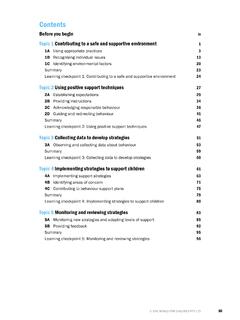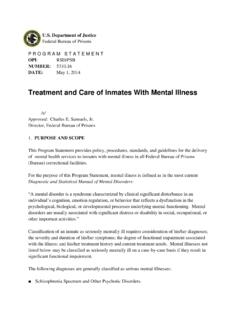Transcription of CHCMHS008 Promote and facilitate self advocacy
1 ASPIRE TRAINING & CONSULTING vContentsBefore you begin viiTopic 1 Assist individuals or groups to identify their issues, rights and preferred options 11A Apply strategic questioning to clarify advocacy issues 21B Review and provide information on self- advocacy in relation to individual or group issues 61C Assist others to clarify their own needs and rights and to determine if their rights are being infringed or not being met 161D Work with others to evaluate and negotiate advocacy options 341E Document advocacy options 40 Summary 43 Learning checkpoint 1: Assist individuals or groups to identify their issues, rights and preferred options 44 Topic 2 Enable individuals to gain self- advocacy skills 492A Build a shared understanding about advocacy issues and choices available 502B Identify potential barriers and relevant strategies to overcome them 532C Collaboratively develop an individual s self- advocacy strategy and arguments 592D Provide opportunities for practising self- advocacy 652E Identify and utilise self- advocacy resources 682F Support individuals to document the circumstances and events relevant to the advocacy situation 71 Summary 75 Learning checkpoint 2.
2 Enable individuals to gain self- advocacy skills 76 Topic 3 Follow up and support individuals after self- advocacy 793A Follow up and reflect with the individual on the self- advocacy process and outcomes, and identify strategies and next steps 803B Provide additional advocacy support to individuals to further enhance their self- advocacy efforts 84 Summary 87 Learning checkpoint 3: Follow up and support individuals after self- advocacy 88 Topic 4 Promote self- advocacy 914A Model aspects of self- advocacy through assertive communication skills 924B Identify and use opportunities to Promote the right of individuals to self-advocate and develop promotional material 954C Encourage a culture of self- advocacy and dignity of risk 984D Raise awareness about barriers to self- advocacy 101 Summary 103 Learning checkpoint 4: Promote self- advocacy 1044 ASPIRE TRAINING & CONSULTINGCHCMHS008 Promote AND facilitate SELF-ADVOCACYC hange questionsChange questions move from the static to the dynamic or from the present situation to a more ideal : What exactly needs to change here?
3 Alternative questionsAlternative questions help to identify and evaluate : What are the consequences of each alternative you see? personal inventory and support questionsThese questions identify an individual s interests, potential contributions, and support required for them to : What do you like to do that might be useful in bringing about these changes? personal action questionsPersonal action questions are designed to get to the specifics of what to do, when to do it, and how it should be : Who do you need to talk to? Clarify advocacy issuesAsking strategic questions of an individual or group will allow you to clarify their advocacy issues. Sometimes there may be a number of issues faced by a person. If this is the case, ask questions that get to the root cause of the problem so you can get a clear idea of what the person s main advocacy issue is and work to help them solve their own problems, one at a time.
4 Write down the answers an individual or group gives you so you can refer back to the information in the future, and record how you assisted them to prepare for self- advocacy . Strategic questioning will allow you and the self-advocates to:XXidentify the main issue; for example, what makes them angry or upsetXXclarify how the issue makes them feel; for example, angry or upsetXXidentify who is causing the problem; for example, the self-advocate or somebody elseXXdiscover why the issues makes a person feel a certain way; for example, that their rights are not being metXXidentify when the issue occurs the most; for example, when the person is alone, or with othersXXidentify where the issue occurs the most; for example, in one place, or in many ASPIRE TRAINING & CONSULTINGCHCMHS008 Promote AND facilitate SELF-ADVOCACYB ehaviouralSymptoms may include avoidance of certain situations, distress in social situations or crowds and obsessive or compulsive behaviour, such as continuous mental illnessThe term serious mental illness (SMI) is often used to describe more severe or chronic (longer lasting) mental disorders, such as schizophrenia and bipolar is an outline of some of the more serious mental disorders you may encounter working in the mental health disorderBipolar disorder is a mood disorder that can also be classified as a psychotic is an illness where a person experiences extreme moods; for example, very elevated or very low and depressed.
5 Some people may experience both extremes, while others will experience one or the other. Treatment includes medication and community support of extreme moods include being or acting: XXhigh and excitableXXgrandiose and recklessXXhelplessXXsometimes personality disorderPeople with borderline personality disorder (BPD) may experience distressing emotions, have difficulty relating to other people and may exhibit self-harming includes a combination of psychological therapy, medication and community may include:XXfeelings of abandonment and insecurityXXconfusion and contradictory feelingsXXimpulsiveness and reckless behaviourXXself-harmXXpossible psychotic symptoms such as depressive disorderDepression is an illness that affects the way a person feels, causing low mood and persistent feelings of sadness and helplessness.
6 The person may also experience physical aches and pains and thoughts of suicide. Treatment includes medication, individual therapy and community support Promote AND facilitate SELF-ADVOCACYThe following provides information about how self- advocacy has evolved over time, reflecting changing attitudes and approaches to assisting people with mental health needs to advocate for themselves. Historical changes in approaches to mental health needs1960sThe self- advocacy movement began in Sweden where people with mental health needs were supported to form and lead their own leisure clubs. National conferences for leisure club members were held and the participants developed statements about how they wished to be leisure club idea spread to Britain and Canada, and the concept of self- advocacy spread across the United States.
7 A group from Oregon formed a self- advocacy group called People First, because they felt their disabilities were secondary to their patients took on a more prominent role in self-care and began speaking up for their rights, needs and preferences. 1980sChanges occurred in the medical area where patients were encouraged to participate in decision-making about their own care and treatment, and to be knowledgeable about the supports and services they required. 1990sParticipants attending a national conference in Nashville in 1991 voted to have a national coalition of state and local organisations. By 1993, there were at least 27 state-wide self- advocacy organisations. 2000sPeople with mental health needs, illnesses or disorders are now encouraged and assisted to stand up for their needs and rights, and participate in decisions made about their care and recovery.
8 mental health consumers and patients are provided with legal protections against discrimination as a result of their mental health needs or illness . Values of self-advocacyThe values of self- advocacy are built on the principles of human rights and social justice. Core values are based on beliefs such as the following:XXConsumers are not defined by th eir mental illness or are supported to make their own are valued as are valued as equals. ASPIRE TRAINING & CONSULTING ASPIRE TRAINING & CONSULTING 17 TopiC 1 ASSIST INDIVIDUALS OR GROUPS TO IDENTIFy THEIR ISSUES, RIGHTS AND PREFERRED OPTIONSC ompulsory patientsAn assessment order allows a psychiatrist to examine a person to decide whether they have a mental illness , even if they do not want to be assessed. A doctor or mental health practitioner (nurse, occupational therapist, psychologist or social worker employed or engaged by a designated mental health service) can make an assessment order.
9 Compulsory patients can be assessed in the community or at a hospital. Compulsory patients are still afforded human rights and are encouraged to make or participate in decisions about their treatment. Support and self-help groupsSupport and self-help groups exist to provide information, programs, social networking and support opportunities to people who share common interests or experiences. There are numerous mental health support and self-help groups that provide advocacy services to the community. Some groups work together to advocate for issues a specific cause, such as schizophrenia treatment, or the prevention of post-natal depression. The purpose of these groups is to focus on the present and work on making changes to improve the lifestyles of the individuals affected.
10 Services are confidential, welcoming to everyone, and usually free. Legal and ethical considerations Legal frameworks are based on law and breaches carry legal penalties. Ethical frameworks may be, but are not always, supported by law, and may not carry legal penalties. Both are intended to support and protect the rights of people receiving services, and to reinforce the duties and responsibilities of workers. Legal frameworks are Acts of Parliament relating to service provision, with attached regulations and service standards. Ethical frameworks include declarations of human rights, codes of ethics, codes of practice and codes of conduct, and agency policies and procedures. mental health legislationEach state and territory has a mental health Act that is the law governing compulsory mental health, assessment and treatment.


















